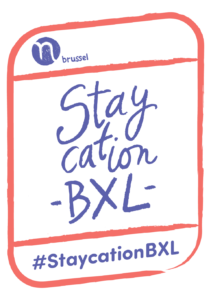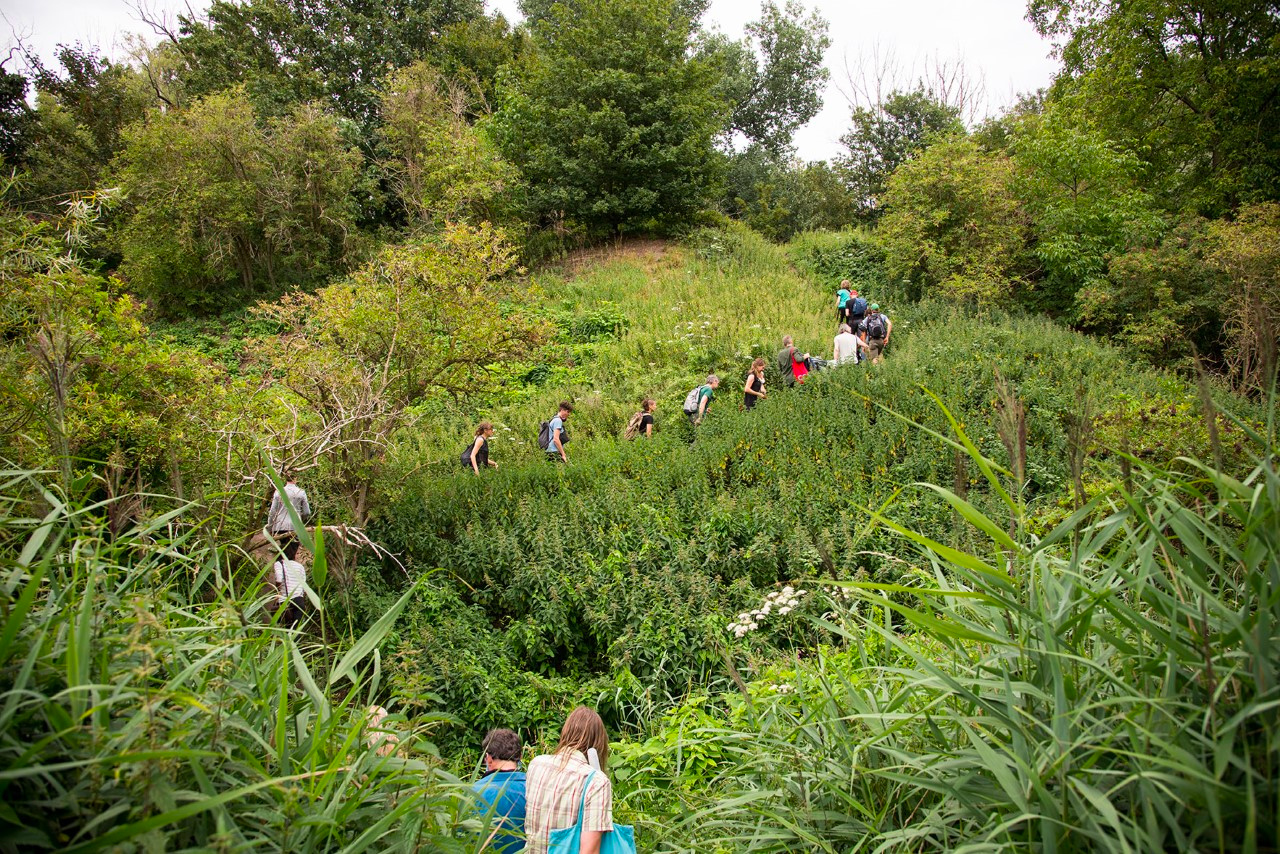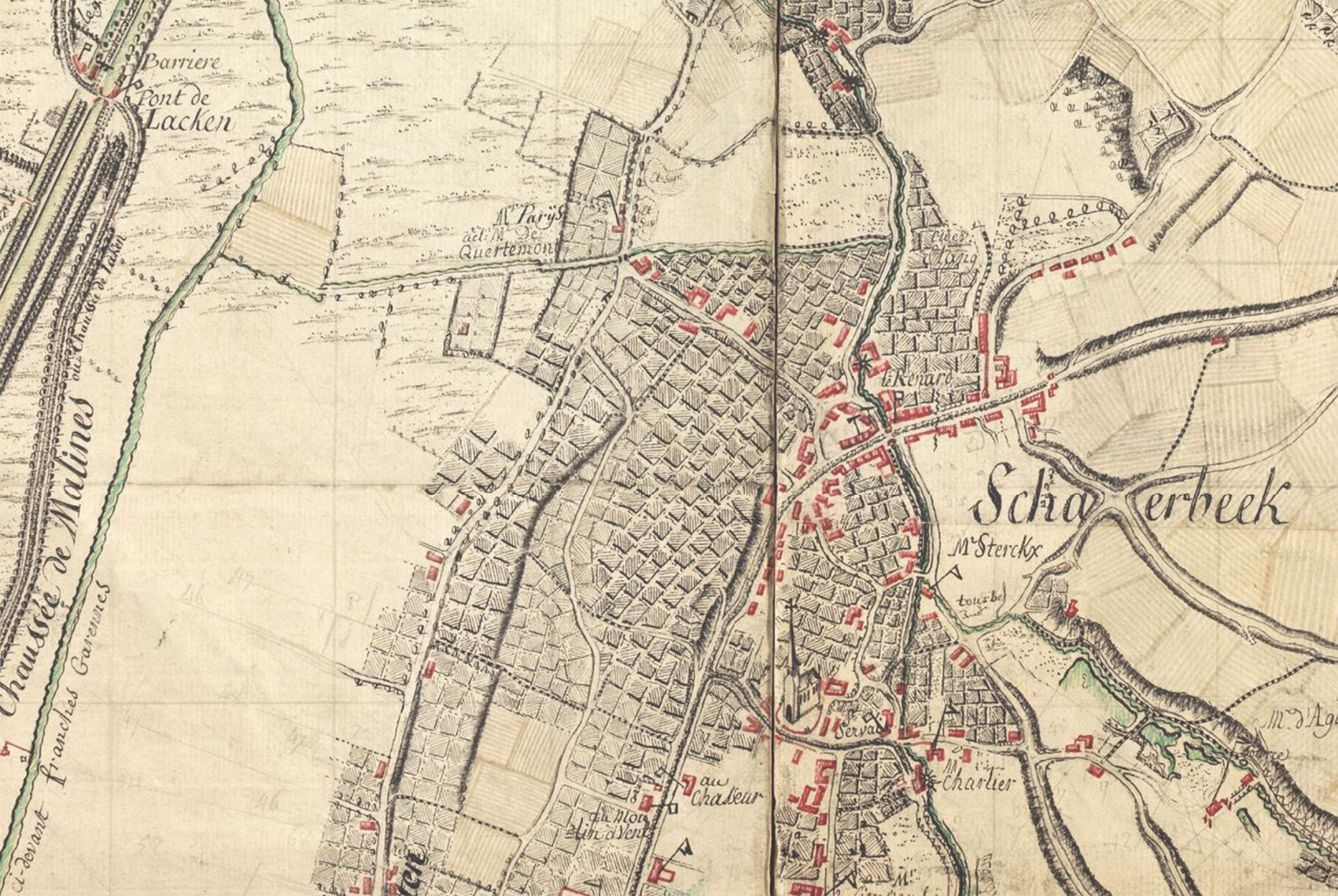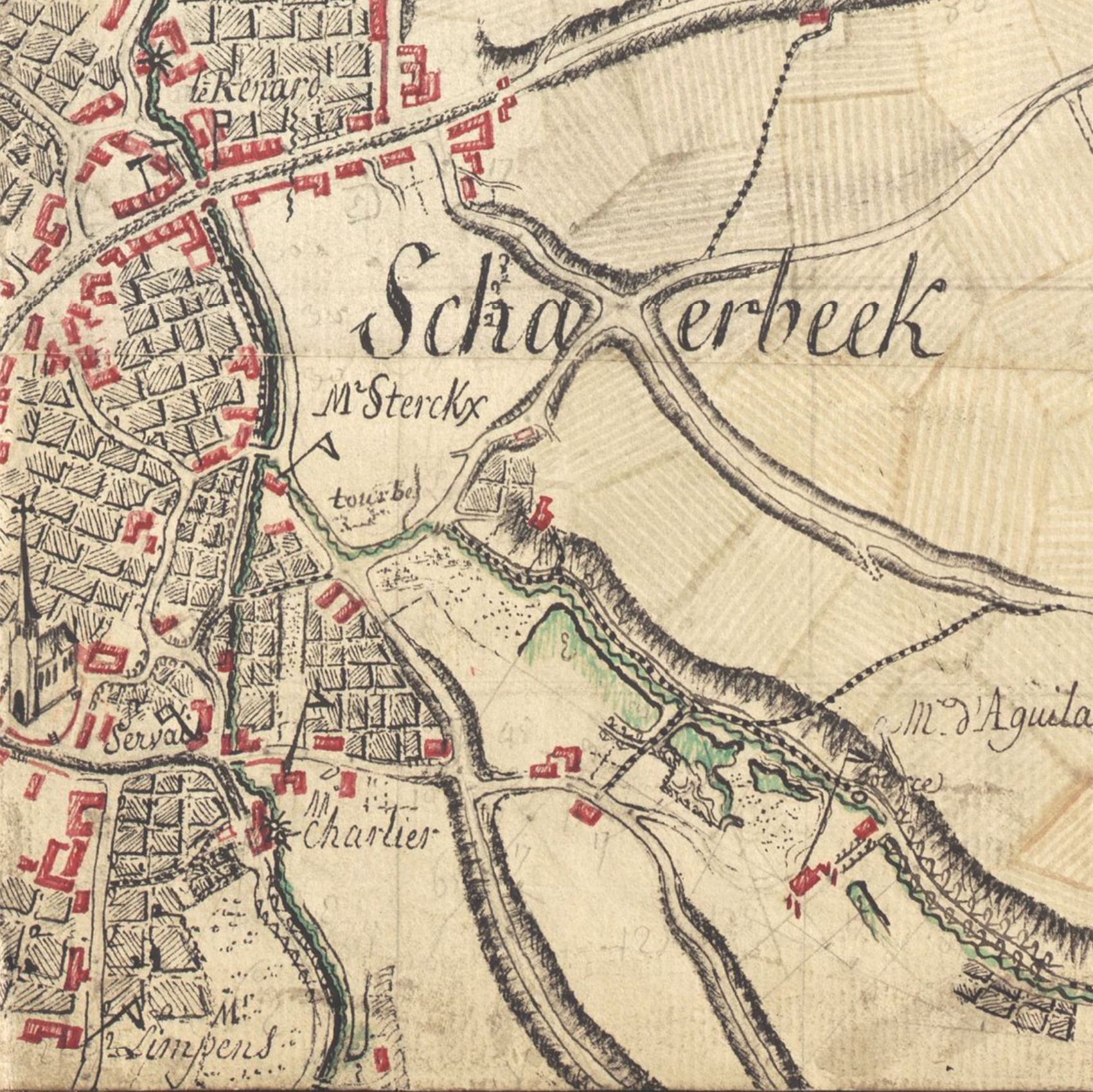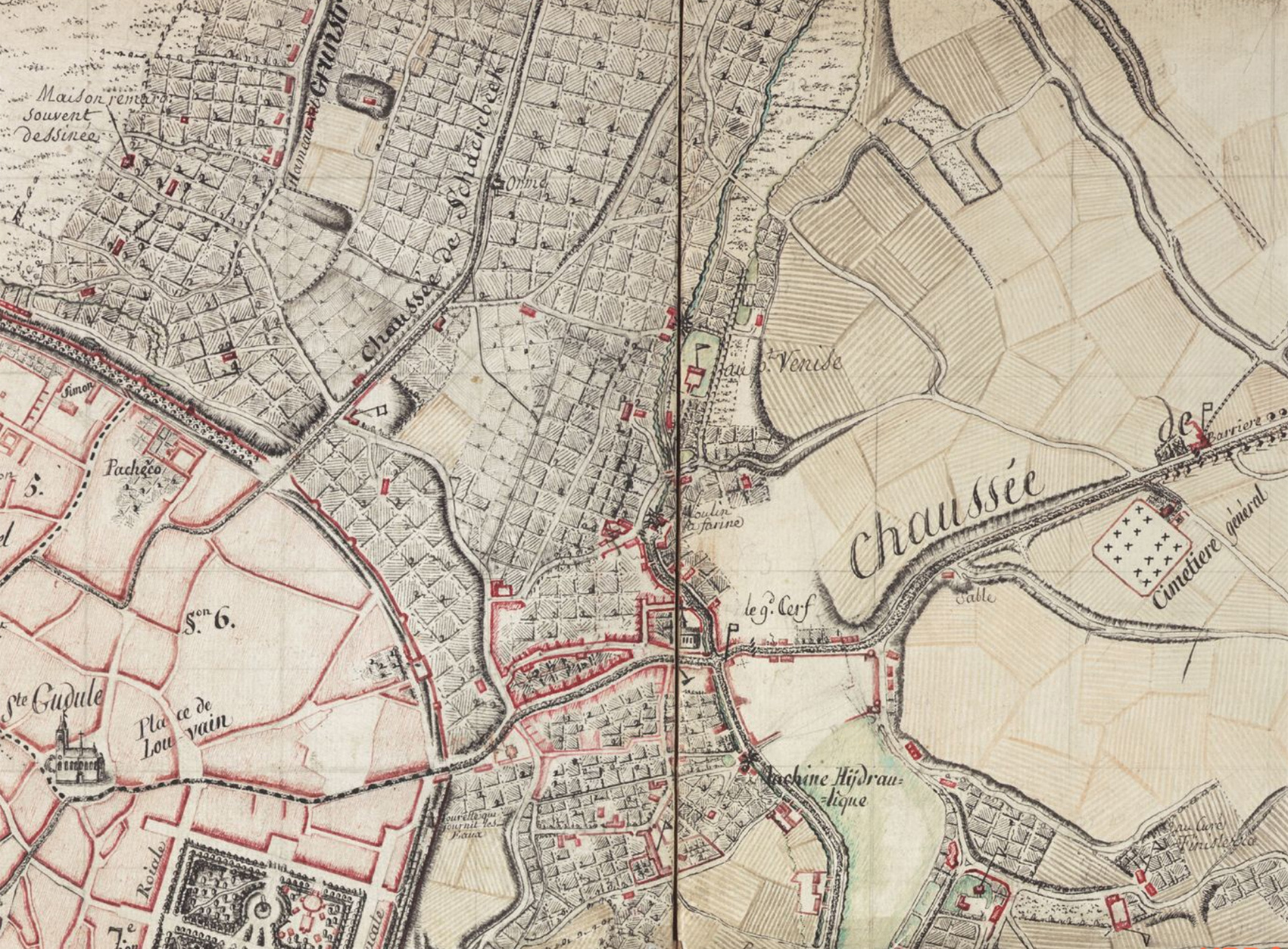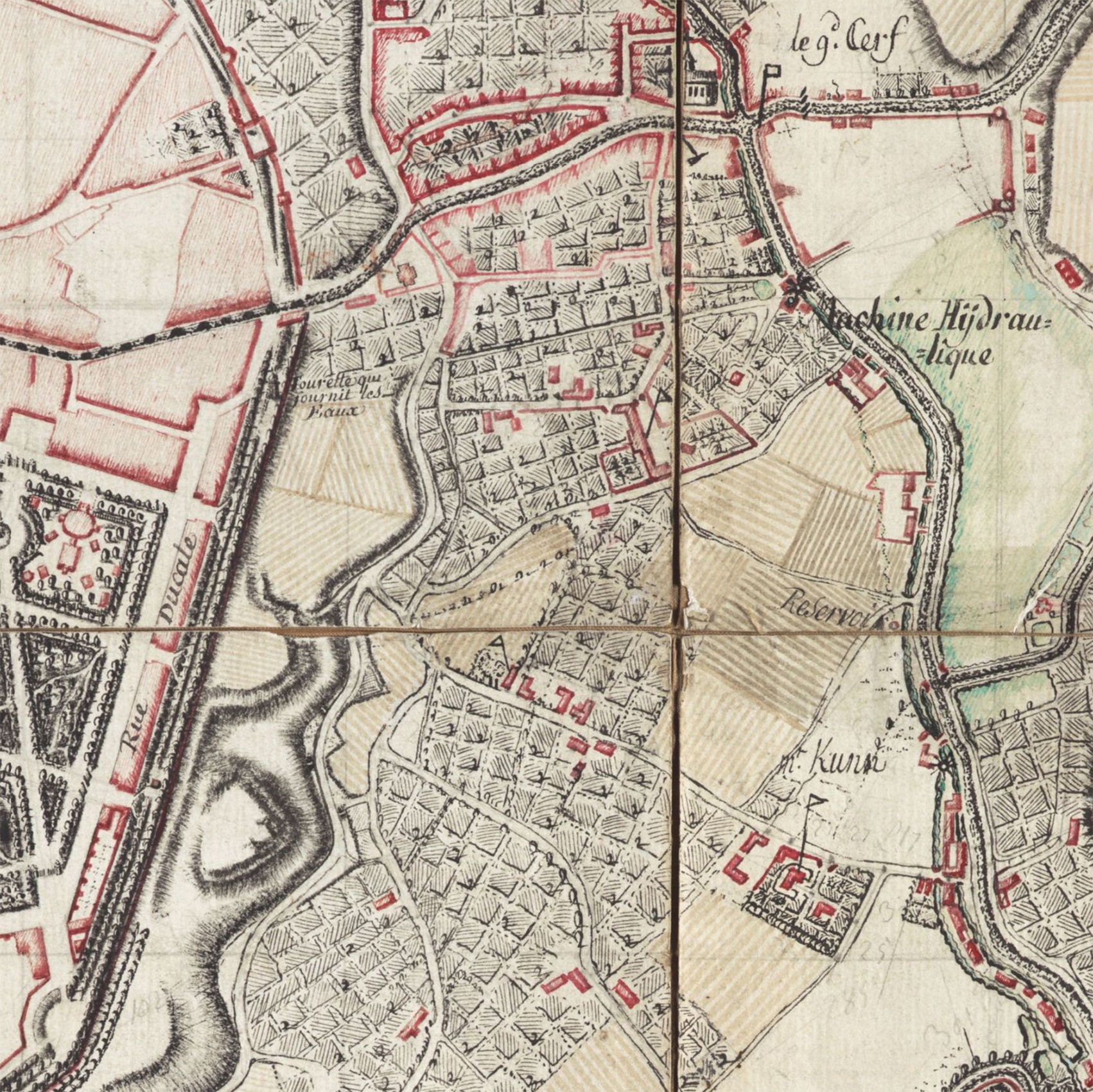Van wie is het water? Aan wie behoort de kunst?
Who owns the water? To whom does art belong?
Wandelen in de Brusselse Maalbeekvallei in juli en september
Let op: Wandeling 3 en 4 hebben nieuwe data, zie hieronder. Wie zich reeds inschreef (oorspronkelijk op 8 en 22 augustus), graag opnieuw inschrijven.
De wandelingen zijn ontstaan in het verlengde van 7 Walks, een project van kunstenaarsduo Vermeir & Heiremans en rechtsfilosoof Luke Mason
For English: see below
NL
Praktisch: De wandelingen worden in het Nederlands aangeboden, met parallelvertaling in het Engels. Deelname aan de wandelingen is gratis maar inschrijven is noodzakelijk vanwege het beperkte aantal deelnemers. Stuur een e-mail naar info@jubilee-art.org om je deelname aan één of meer van de wandelingen te bevestigen. Uren en vertrekplaatsen worden dan meegedeeld.
In vier verschillende wandelingen volgen we de vallei van de nu overwelfde Maalbeek vanaf Etterbeek, Sint-Joost-ten-Node, doorheen Schaarbeek, tot waar de rivier uitmondt in de Zenne. We treden in de voetsporen van 19e-eeuwse kunstenaars, politici, filosofen … die ons contrasterende visies op ‘eigendom’ bieden met betrekking tot kunst, natuurlijke hulpbronnen en stedelijke ontwikkeling.
Wandelen creëert een directe relatie met de omgeving waarin we ons bewegen en genereert een zintuiglijke ervaring. Wandelen heeft niet voor niets een uitgebreide filosofische, literaire en artistieke geschiedenis en we sluiten ons graag aan bij die traditie.
Van wie is het water? Aan wie behoort de kunst? haalt inspiratie uit lokale situaties, verhalen en mensen uit het verleden en brengt ze samen in een nieuw hedendaags verhaal dat een verbinding wil maken tussen kunst en water, een verbinding tussen een sociale en een natuurlijke commons.
Is toegang tot kunst net zo essentieel als onze toegang tot water? Hoe kunnen we een concept als ‘eigendom’ op een creatieve manier herbekijken en zo toegevoegde waarde beter distribueren? Van wie is het water? Aan wie behoort de kunst? nodigt deelnemers uit om ‘eigendom’ op een meer gelaagde manier te begrijpen, met het oog op een duurzamere praktijk, zowel in de kunst als in het beheer van natuurlijke hulpbronnen en van de stad.
Het activeren van lokale verhalen en personages uit het verleden dient ter inspiratie voor de gesprekken met deelnemers over kwesties die ons vandaag aangaan. Op elke wandeling worden we vergezeld door een gast met specifieke kennis van recht, commons, 19e-eeuwse kunstmarkt, filosofie of geschiedenis… Ideeën die uit de discussies voortkomen zullen worden uitgezet op een ‘kaart’ die een basis creëert voor toekomstige wandelingen en gesprekken.
WANDELING 1: Water voor particuliere investeerders?
Zaterdag 18 juli 2020 – 14-17u
In deze wandeling langsheen bronnen en waterlopen in de Maalbeek- en Josaphatvallei focussen we op actuele en historische vraagstukken rond water en de eigendomrelaties die daarin spelen. De Josaphat, ook wel de Roodenbeek genoemd, is een zijrivier van de Maalbeek en die wordt gevoed door verschillende bronnen, waarvan de Minnebron in het Josaphatpark één van de bekendste is. Wat was er in de tweede helft van de 19de eeuw beter om de ontwikkeling van een nieuwe wijk te stimuleren dan een park! Hierdoor konden gemeenten in volle expansie investeerders en eigenaren aantrekken. Ook Schaarbeek durfde deze beproefde methode te gebruiken en in 1896 werd het idee gelanceerd voor een park op het terrein van de Josaphat. In de jaren 1860 werd de Maalbeek overwelfd in een poging epidemieën te voorkomen en dit zou uiteindelijk leiden tot de oprichting van een modern waterdistributienetwerk. Particuliere investeerders wilden water privatiseren als natuurlijke hulpbron. In hun voorstellen wilden ze de waterdistributie binnen Brussel op hun kosten organiseren om de verkoop van water voor zichzelf te reserveren. Stadsbestuurders verzetten zich echter tegen dit plan en waterdistributie werd een publieke opdracht. Maar creëerde deze aanpak een gelijke toegang tot water en hoe vertaalt dit zich in de huidige vraagstukken rond water in de stad?
WANDELING 2: Een sociale utopie aan de Maalbeek?
Zaterdag 25 juli 2020 – 14-17u
Deze wandeling brengt ons naar het gebied waar de Maalbeek uitmondt in de Zenne, waar we de voormalige site van de kachelfabriek van Jean-Baptiste André Godin bezoeken. De Godin-fabriek werd afgebroken om plaats te maken voor winkelcentrum Docks. Naast de deur is Godin’s Familistère, een 19de-eeuwse woonblok met een binnenplaats die is overdekt met een glazen koepel. Godin wilde dat arbeiders ook zouden profiteren van de rijkdom die door de industrie werd gecreëerd. Als jonge slotenmaker had hij de tragische arbeidsomstandigheden van de arbeiders in de metaalindustrie gezien. Hij begon toen het werk van de 19de-eeuwse sociale utopisten Saint-Simon en Fourier te lezen en vond zijn missie. De Familistère was de vervulling van een collectief emancipatieproject. In de door Fourier geïnspireerde L’Association coopérative du capital et du travail waren arbeiders betrokken bij management en besluitvorming en werden ze collectieve eigenaren. We volgen de Maalbeek terug naar haar zijrivier de Kerkebeek en vervolgen onze wandeling naar een van de laatste originele moerasgebieden die de stad vandaag nog heeft.
WANDELING 3: Een monopolie op kunstenaars?
Let op, nieuwe datum: zaterdag 12 september 2020 – 14-17u
De Belgische kunsthandelaar Ernest Gambart domineerde de 19de-eeuwse kunstmarkt in Londen. Zijn systeem van commerciële kunstgalerijen verstoorde het door de Academie gedreven valorisatiesysteem van de kunsten. Gambart had een monopolie op de vertegenwoordiging in Londen van het werk van twee beroemde Schaarbeekse kunstenaars, Louis Gallait en Eugène Verboeckhoven. Beide schilders leven voort in onze tijd, niet alleen vanwege de aanwezigheid van hun werk in kunstcollecties, maar ook omdat ze behoren tot een groot aantal 19de-eeuwse kunstenaars wiens namen straatnamen zijn geworden in Schaarbeek en naburige gemeenten. In contrast met Gambart’s monopolisering in de kunsten, lopen we langs historische en hedendaagse modelprojecten in Schaarbeek die experimenteren met meer gelaagde eigendomsvormen.
WANDELING 4: Een pionier van het universele basisinkomen
Let op, nieuwe datum: zaterdag 19 september 2020 – 14-17u
In 1601 werd in opdracht van aartshertogen Albrecht en Isabella een hydraulische machine bij een vijver in Sint-Joost gebouwd om het water van de Broebelaar bergopwaarts te pompen naar het Coudenberg paleis. Dit nodigt ons uit om de waarde van water als een gemeenschappelijke natuurlijke hulpbron te beschouwen. Een 19de-eeuws geschil over waterprijzen leidt tot de oprichting van een openbaar waterbedrijf door Sint-Joost-ten-Node, Schaarbeek, Etterbeek en Sint-Gillis, maar Joseph Charlier, die in Sint-Joost woonde, ging nog een stap verder. Volgens Charlier waren natuurlijke hulpbronnen door God bedoeld om een garantie te bieden voor de “vitale behoeften” van alle mensen. Geïnspireerd door Fourier, stelde Charlier in 1848 een basisinkomen voor dat onvoorwaardelijk aan elk lid van de samenleving zou worden betaald, ongeacht zijn noden of het vermogen om te werken. Charlier vatte zijn filosofie als volgt samen: “Le sol à personne, mais le fruit à tous.” (De grond is van niemand, maar de vruchten zijn voor iedereen).
EN
Who owns the water? To whom does art belong?
Walking in Brussels’ Maalbeek valley in July and September
Please note: Walks 3 and 4 have new dates! Everyone who already registered (original dates: 8 and 22 August), please register anew.
The walks are developed in line with 7 Walks, a project by artist duo Vermeir & Heiremans Vermeir & Heiremans and legal philosopher Luke Mason
Practical: The walks will be conducted in Dutch, with additional translation in English. Participation in the walks is free but registration is necessary due to the limited number of people that can take part. Please send an email to info@jubilee-art.org to confirm your participation in one or more of the walks. Hours and places of departure will then be communicated.
In four different walks we follow the valley of the now arched Maalbeek from Etterbeek to Sint-Joost-ten-Node and through Schaarbeek, to where this small river flows into the Senne. We will thread in the footsteps of 19th century artists, politicians, philosophers… who offer us their contrasting visions on ‘property’ related to art, natural resources and urban development.
Walking creates a direct relationship with the environment in which we move, and generates a sensory experience. It is not without reason that walking has an extensive philosophical, literary and artistic history, and we are happy to join that tradition.
Who owns the water? To whom does art belong? draws inspiration from local situations, stories and people from the past and brings them together in a new contemporary narrative that aims to make a connection between art and water, a connection between a social and a natural commons.
Is access to art as essential as our access to water? How can we creatively re-imagine a concept such as ‘ownership’ and thereby better distribute added value? Who owns the water? To whom does art belong? invites participants to understand ‘ownership’ in a more stratified way, aiming for a more sustainable practice both in the arts and in natural resource and city governing.
Activating local stories and characters from the past aims to inspire conversations with participants on issues concerning us today. Each walk will be joined by a guest with specific knowledge on law, commons, 19th century art market, philosophy or history… Ideas derived from our common discussions will be plotted on a ‘map’ creating a memory and basis for future walks and conversations.
WALK 1: Water for private investors?
Saturday 18 July 2020 – 14-17h
In this walk we connect current water issues and water property relations through a narration about the sources and watercourses in the Maalbeek and Josaphat valley. The Josaphat, also called the Roodenbeek, was a tributary of the Maalbeek and was fed by various sources, of which the Minnebron in Josaphat Park is one of the best known. What was better during the second half of the 19th century to stimulate the development of a new neighborhood than a park! It allowed municipalities in full expansion to attract investors and owners. Schaarbeek also dared to use this proven method and in 1896 the idea was launched for a park on the site of the Josaphat. In the 1860s the Maalbeek was covered in an attempt to avoid epidemics and a process started that would lead to the creation of a modern water distribution network. Private investors wanted to privatize water as a natural resource. Their proposal wanted to organize water distribution within Brussels at their expense so as to reserve the sale of water to themselves. City governors however resisted this plan and water distribution became a public task. But did this create an equal access to water and how does this translate to today’s water issues?
WALK 2: A social utopia on the Maalbeek?
Saturday 25 July 2020 – 14-17h
This walk brings us to the area where the Maalbeek flows into the Senne, where we visit the former site of the cast-iron stove factory of Jean-Baptiste André Godin. The Godin factory has been demolished to make way for shopping center Docks. Next door is Godin’s Familistère, a 19th century residential housing block with a courtyard covered by a glass dome. Godin wanted workers to also take advantage of the wealth created by industry. As a young blacksmith locksmith, he had seen the tragic working conditions of the metal industry workers. He then began to read the work of 19th century social utopians Saint-Simon and Fourier and found his mission. The Familistère was the fulfillment of a collective emancipation project. In the Fourier-inspired Cooperative Society of Capital and Labor, workers were involved in management and decision-making, and became collective owners. Following back the Maalbeek to it’s tributary the Kerkebeek, we will continue our walk to one of the last original ‘wetlands’ the city still has.
WALK 3: A monopoly on artists?
Please note: new date! Saturday 12 September 2020 – 14-17h
The Belgian art dealer Ernest Gambart dominated the 19th century London art market. His commercial art gallery system completely disrupted the Academia driven valorisation sytem of the arts. Gambart had a monopoly on the representation in London of the work of two famous Schaarbeek artists, Louis Gallait and Eugène Verboeckhoven. Both painters live on in our time, not only because of the presence of their work in art collections, but because they also belong to a great number of 19th century artists whose names have become street names in Schaerbeek. In contrast to monopolisation efforts in the arts, we’ll walk by and discuss both historical and contemporary attempts in Schaarbeek to more re-distributive forms of ownership.
WALK 4: A pioneer for universal basic income
Please note: new date! Saturday 19 September 2020 – 14-17h
A hydraulic machine, near a lake in Sint-Joost was commissioned by archdukes Albrecht and Isabella in 1601, to pump the water from the ‘Broebelaar’ uphill to the Coudenberg palace. This invites us to consider the value of water as a common natural resource. A 19th century dispute over water prices leads to the installment of the public water company of Sint-Joost-ten-Node, Schaarbeek, Etterbeek and Sint-Gillis, but Joseph Charlier, who lived in Sint-Joost, went even further. According to Charlier, natural resources were intended by God to provide a guarantee for the ‘vital needs’ of all persons. Inspired by Fourier, Charlier proposed a basic income scheme in 1848 that was paid unconditionally to every member of society, regardless of need or ability to work. Charlier summarized his philosophy as follows: “Le sol à personne, mais le fruit à tous.” (The soil belongs to no one, but the fruits are for all).
Deze wandelingen worden mogelijk gemaakt met de steun van Staycation, een project van VGC
These walks are made possible by the kind support of Staycation, a project by VGC
